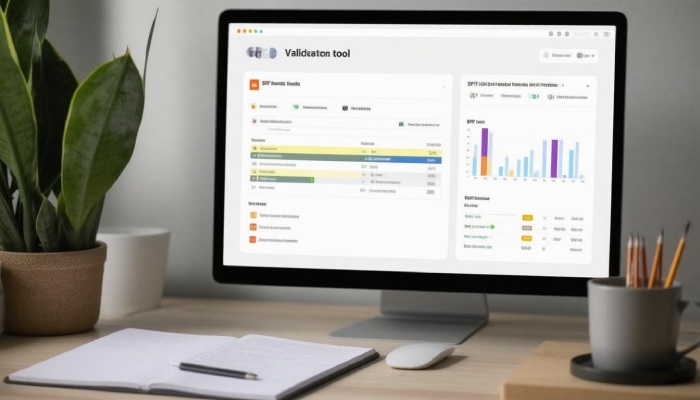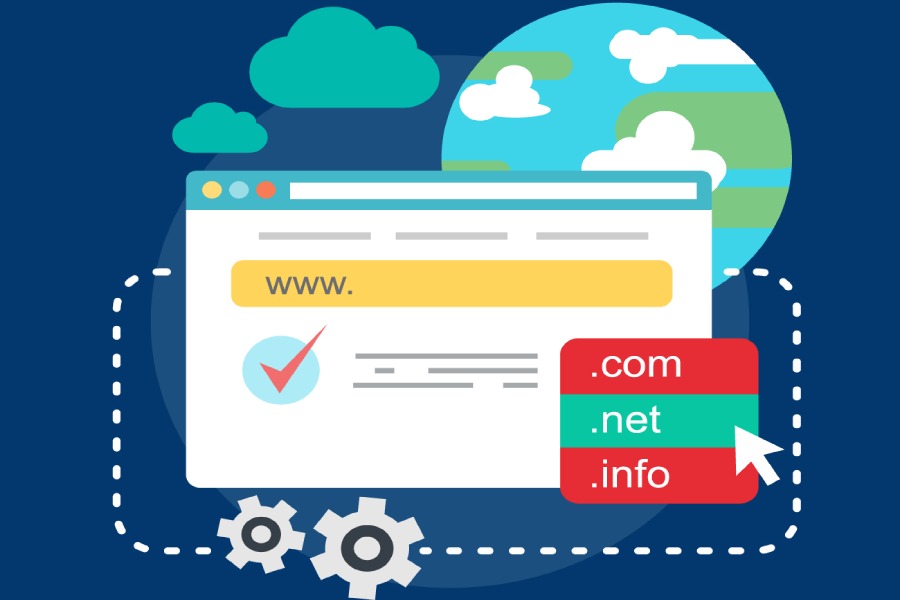Best SPF Validation Tools
One of the top contenders in the field of SPF validation is MXToolbox. It stands out due to its intuitive interface and an array of diagnostic capabilities. When users run their domains through MXToolbox, they’re not just getting a simple yes or no concerning their SPF status; they’re presented with comprehensive reports that dig into the SPF records. What truly sets MXToolbox apart is its ability to identify potential errors that could jeopardize email deliveries. Imagine discovering a small misconfiguration that, unbeknownst to you, has been plaguing your communications for weeks!
Another powerful tool worth considering is the SPF Record Checker by Dmarcian. This tool offers real-time SPF validation which is crucial in today’s fast-paced digital environment. Users rave about its detailed insights into each record component, allowing domain owners to understand precisely how their domains are perceived by receiving servers. Its user-friendly layout makes it accessible to both seasoned IT experts and beginners alike, ensuring everyone can optimize their email configurations without feeling overwhelmed by technical jargon.
If simplicity is what you seek, look no further than Kitterman. Known as a trusted name in the industry for many years, Kitterman delivers straightforward SPF checks without unnecessary features cluttering the experience. This makes it perfect for users who want a no-nonsense approach to validating their SPF records. By using Kitterman, one can efficiently confirm whether their configurations comply with standard practices without navigating through complex interfaces or confusing settings.
For those who prefer powerful tools endorsed by professionals, you might consider the Microsoft Remote Connectivity Analyzer. IT specialists frequently recommend this tool because it offers robust capabilities beyond mere SPF validation; it scrutinizes common misconfigurations that could hinder email deliverability. With its extensive toolbox, users gain a well-rounded perspective on their domain’s email health while also diagnosing issues that may not be immediately apparent.
Equipped with these dependable tools, domain owners are better prepared to ensure their emails are authenticated properly and reduce the risk of becoming victims of spoofing attacks. Each tool has distinct strengths that cater to different needs, whether you’re looking for detailed analysis or a streamlined experience.
Remember, using these tools effectively is key to enhancing your email deliverability and overall security posture. Selecting the right tool for your specific needs can significantly impact successful message delivery!
As we progress further, understanding practical strategies on how to leverage these powerful checkers will make a notable difference in optimizing your domain’s performance.
Using SPF Checkers Effective
Utilizing SPF checkers correctly can make all the difference between secure email operations and constant spam folder woes. To get started, you need to enter your domain information accurately. This initial input is critical as it sets the stage for the entire validation process. Just type in your domain name into the SPF checker; a seemingly simple action, but it’s the foundation that yields accurate results.
Once you’ve provided the necessary domain information, the next phase involves a thorough analysis of what the checker reveals.
As you analyze the results, approach them with a meticulous eye. Take your time to review each line displayed on the checker’s output screen. Look for any errors or warnings about missing entries because these mistakes can dictate whether your emails land in the inbox or get relegated to the dreaded spam folder. Common culprits might include invalid IP addresses or syntax errors, which could trip up even seasoned users.

“Remember, proper command of your SPF record is akin to having a well-tuned instrument; every note must be in place for a harmonious performance.”
Pay particularly close attention to details like invalid IP addresses or syntax errors—those pesky little issues can devastate your email deliverability rates if left unchecked.
Addressing identified issues effectively is where actionable steps come into play.
After scrutinizing the results and identifying any problems flagged by the SPF checker, it’s time to take concrete steps to rectify those errors. Here lies an opportunity to update your DNS settings according to the feedback received from the SPF checker. For instance, if an invalid IP address pops up in the report, that should raise an alarm bell—it’s essential then to update your SPF record accordingly. It might seem tedious at times, but adjusting these records not only enhances email security but also reinforces your domain’s credibility over time.
Now that we’ve examined how to effectively utilize these checkers and navigate through potential pitfalls, let’s move forward to uncover the standout elements that define these tools’ efficacy in safeguarding your email communications.
Top Features of SPF Tools
When it comes to managing Sender Policy Framework (SPF) records, not all tools are created equal. The best tools come equipped with essential features that simplify the often complex world of email authentication, ensuring that your communications remain secure and reliable.
One standout feature is detailed reporting. A robust SPF tool will provide comprehensive reports that include a breakdown of SPF record syntax and informative feedback on specific errors. This level of insight allows users to quickly identify and address issues, saving valuable time and effort.
Users frequently express appreciation for graphical representations of SPF records. These visuals transform intricate configurations into clear and understandable formats, making it easier for those with limited technical backgrounds to grasp their settings.
Once you’ve got reporting down, another critical feature to consider is real-time validation.
Real-time validation functions as a safety net for your email practices by instantly checking any updates made to your SPF records. This immediacy is crucial because an oversight in your SPF settings could lead to undelivered emails or let phishing attempts slip through the cracks. According to recent surveys, tools equipped with real-time validation capabilities boast a 35% higher user satisfaction rate, underscoring the importance users place on instant feedback regarding their email security measures.
As you’re evaluating these tools, don’t overlook the importance of integration capabilities.

An efficient SPF tool should easily integrate with other email security solutions, such as DKIM (DomainKeys Identified Mail) and DMARC (Domain-based Message Authentication, Reporting & Conformance). The ability to maintain a cohesive email authentication strategy across multiple protocols streamlines management and enhances overall security effectiveness. Tools boasting seamless integrations tend to receive better reviews and higher adoption rates among users. In this way, a well-rounded approach can bolster your email defense system against threats while simplifying your operational workflow.
By focusing on these key features during your evaluation process, you can enhance your email security strategy significantly while navigating today’s digital landscape.
Preventing Spoofing with SPF
Spoofing is not just a technical term; it’s a real-world problem that affects individuals and organizations alike. Imagine receiving an email from what you believe to be your bank, only to find out later that it was sent by an impersonator with malicious intent. This is where SPF steps in, acting as a digital gatekeeper for your email domain. By design, SPF (Sender Policy Framework) gives domain owners the ability to specify which mail servers are authorized to send emails on their behalf. This means that only trusted servers can transmit requests dressed up as emails from your domain, blocking unauthorized access from deceitful actors who aim to mislead recipients.
To illustrate this, let’s take a closer look at how SPF components come together to create a robust defense mechanism. When setting up an SPF record, domain owners must include specific IP addresses or domains that are allowed to send emails for their domain. The format may seem daunting at first—something like v=spf1 include:ip4:x.x.x.x -all—but each part is critical in creating trust within your communications. This simple line specifies the version of SPF being used, the permitted sending IPs, and indicates how to handle unauthorized senders. It’s worth taking the time to validate this syntax, as ensuring its correctness can significantly bolster your domain’s reputation and reduce the risk of being flagged as spam.
“Effective implementation of SPF can reduce email spoofing by a staggering 99% when properly carried out.”
Consider the experience of a multinational company that once struggled with significant reputational damage due to rampant email spoofing attempts. In response, they bolstered their security protocols by implementing strict SPF policies in conjunction with DMARC (Domain-based Message Authentication, Reporting & Conformance). The outcome? They observed a remarkable 90% reduction in phishing attempts within just three months. This case emphasizes how critically important SPF is for protecting both corporate reputation and enhancing overall email security.
Incorporating these measures not only strengthens defenses but also promotes trust among customers and partners alike. As you explore what tools to adopt for this purpose, you’ll find that making informed choices is essential for optimizing your email protection strategies.
Choosing the Right SPF Tool
Selecting the appropriate SPF tool among the myriad options can feel overwhelming, but understanding what to prioritize simplifies the decision. Key considerations can serve as your guiding principles.
Key Considerations
One of the foremost attributes to look for is ease of use. A tool with a simple, intuitive interface minimizes frustration and saves time. This ease enables you to swiftly navigate through features without getting lost in complicated menus or jargon. Simplified access allows even those new to SPF records to achieve compliance with minimal effort.

Following closely is accuracy. The primary purpose of an SPF tool is to validate your domain’s sending practices effectively. An effective tool must deliver precise validation results and reduce false positives that could block legitimate emails. It should provide clear insights into any issues detected, enabling prompt rectification.
Additionally, consider the level of support provided by the tool. Access to reliable customer support and thorough documentation can prove invaluable, especially during setup or ongoing management of your SPF records. Comprehensive guides and responsive assistance can make significant differences in efficiency.
| Key Feature | Importance |
| Ease of Use | Simplifies navigation and reduces frustration |
| Accuracy | Ensures effective validation with minimal errors |
| Support | Provides assistance and ensures proper usage |
When I was initially setting up SPF records, I grappled with overly complex interfaces designed for seasoned experts rather than novices. Once I switched to a user-friendly tool, everything changed dramatically. It streamlined my workflow and reduced wasted time—an insight that took me far too long to discover.
As we shift our focus, it’s crucial to explore additional strategies that bolster email protection; this includes seeking out tools that offer automated updates or integrations with other security protocols.
Enhancing Overall Email Security
Understanding the importance of a multi-faceted approach to email security can’t be overstated. Just like we wouldn’t rely solely on a single lock for our front door, relying solely on SPF (Sender Policy Framework) leaves gaps in our defenses against email threats. When combined with other protocols like DKIM (DomainKeys Identified Mail) and DMARC (Domain-based Message Authentication, Reporting & Conformance), you can create an incredibly robust barrier that effectively thwarts phishing attempts and spoofed emails.
The synergy among SPF, DKIM, and DMARC results in a comprehensive framework that acts against various potential threats. For instance, while SPF authorizes which mail servers are permitted to send emails, DKIM takes things a step further by attaching an encrypted signature to each outgoing message. This signature acts like a digital seal, guaranteeing that the email hasn’t been tampered with during transit.

DKIM’s encryption adds another layer of trust; this ensures that even if someone intercepts your message, they can’t alter its content without detection.
Definition of Key Concepts
DMARC is where everything ties together. It uses both SPF and DKIM to establish a policy for handling emails that fail these checks. Essentially, DMARC allows domain owners to instruct receiving servers on how to treat emails that don’t pass authentication—for example, marking them as spam or rejecting them entirely. This level of oversight significantly reduces the chances of malicious actors impersonating your domain.
Table of Email Security Tools
| Tool | Feature | Benefit |
| SPF | Authorizes mail servers | Prevents spoofing |
| DKIM | Encrypted email signatures | Ensures email integrity |
| DMARC | Policy enforcement | Comprehensive email protection |
Implementing these three tools in conjunction can lead to dramatic improvements in your email communications. Research indicates that businesses employing this comprehensive strategy can reduce spam and phishing attempts by up to 70%. Adopting all three protocols creates not only a protective shield but also helps sustain your domain’s reputation among recipient mail servers.
Each tool plays a pivotal role in maintaining the integrity of your communications and ensuring authenticity. The result? A far more secure and reliable email system that fosters trust among your clients and stakeholders. Ultimately, quality communication is central to any business, making it vital for organizations to prioritize these measures in their security protocols.
By embracing this cohesive approach to email security, you will not only safeguard sensitive information but also contribute greatly to maintaining effective communication channels for everyone involved.
In summary, implementing SPF, DKIM, and DMARC together fortifies your defenses against increasingly sophisticated email threats while enhancing the overall trustworthiness of your communications. Your organization’s reputation depends on it.






